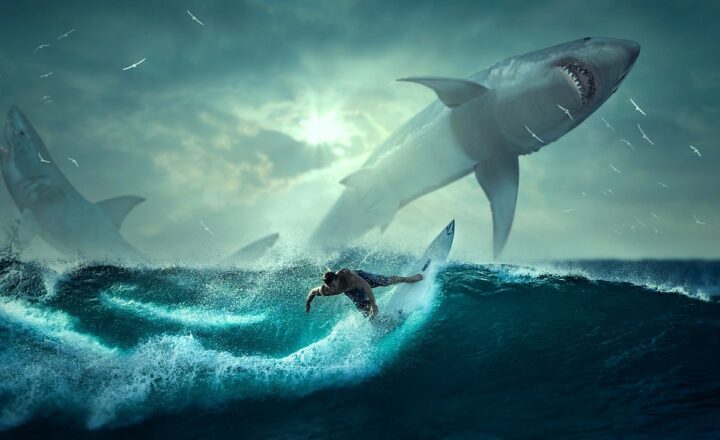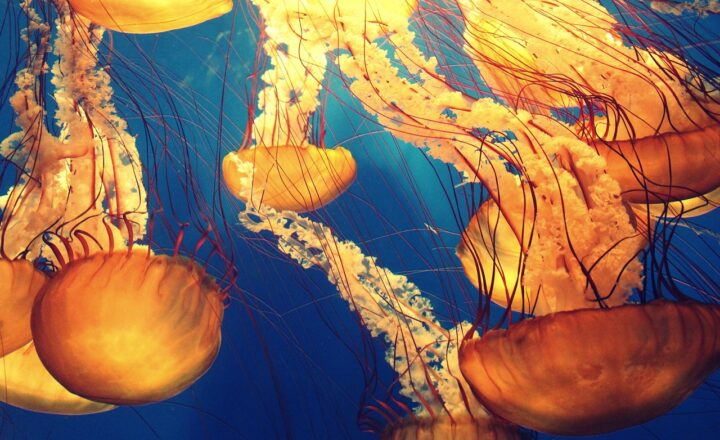The Top Predators of Ancient Oceans: From Megalodon to Liopleurodon
November 14, 2024

The oceans may be home to a plethora of thriving ecosystems today, but millions of years ago, these expansive waters were ruled by some of the most formidable predators ever to inhabit the earth. Among them, the Megalodon and Liopleurodon stand out, showcasing the terrifying and awe-inspiring nature of marine life in ancient epochs. In this article, we’ll dive deep into these apex predators, examining their origins, adaptations, hunting techniques, and eventual extinction, while also exploring other notable contenders of the ancient oceans.
1. The Dawn of Marine Predation
The history of life in the oceans is a narrative of constant evolution and adaptation. Early predators emerged during the Cambrian period (around 541 million years ago), primarily as arthropods. These ancient carnivores set the stage for future marine predators with the development of new hunting strategies and anatomical adaptations that would dominate the oceans for millions of years.
With the passage of time, numerous marine reptiles, massive fish, and other gigantic creatures evolved into apex predators, showcasing nature’s creativity.
2. Megalodon: The Apex Shark
2.1 Origins and Classification
The Megalodon (Carcharocles megalodon) was a prehistoric shark that roamed the oceans during the Miocene and Pliocene epochs (approximately 23 to 2.6 million years ago). This gigantic predator is often regarded as the largest shark—and indeed, the largest fish—that ever existed. Estimates suggest that Megalodon could reach lengths of up to 60 feet or more and weigh as much as 60 tons.
2.2 Physical Characteristics
Unlike modern sharks, Megalodon possessed massive teeth—some measuring over 7 inches long—which were designed for efficiently capturing and eating large prey, including whales. The powerful jaws of the Megalodon could exert a force of roughly 18 tons, making it a fearsome predator in its time.
2.3 Hunting Strategies
Megalodon dominated the oceans primarily due to its size and hunting strategies. This shark likely employed ambush tactics, using its speed and strength to take down large marine mammals. The combination of an excellent sense of smell and acute hearing would have allowed Megalodon to locate its prey effectively, striking with brutal efficiency.
2.4 Extinction
Despite its prowess, the Megalodon went extinct around 2.6 million years ago, with speculative reasons ranging from changes in ocean temperatures, a decline in prey availability, and increased competition from smaller, more agile sharks.
3. Liopleurodon: The Marine Reptile
3.1 Origins and Classification
Liopleurodon was a large marine reptile from the Pliosauridae family, known to inhabit the oceans during the Late Jurassic period (approximately 160 million years ago). While often depicted as a massive creature, Liopleurodon could grow up to 25 feet long, making it considerably smaller than Megalodon but still a fearsome predator.
3.2 Physical Characteristics
Liopleurodon’s body was streamlined, with a robust head and powerful jaws filled with sharp teeth designed for grasping slippery prey. It is believed to have had a strong sense of smell and excellent vision, which would have aided it in hunting in dark ocean depths.
3.3 Hunting Strategies
Liopleurodon was likely an opportunistic predator, preying on a variety of marine species, including fish and smaller marine reptiles. Its large, powerful limbs would have facilitated swift movement through the water, allowing it to ambush prey effectively.
3.4 Extinction
Pliosaurs like Liopleurodon faced competition from evolving marine mammals and the changing dynamics of the ocean ecosystems. Although they thrived in their era, they gradually went extinct at the end of the Cretaceous period, coinciding with a massive extinction event that wiped out many marine and terrestrial species.
4. Other Notable Ancient Ocean Predators
While Megalodon and Liopleurodon are among the most recognized ancient ocean predators, several other species ruled these waters, each with unique adaptations.
4.1 Plesiosaurs
Often perceived as an iconic group of marine reptiles, Plesiosaurs had long necks and large bodies. They were formidable hunters, utilizing their long limbs to navigate and capture prey in the water.
4.2 Dunkleosteus
This prehistoric fish, who roamed the oceans during the Late Devonian period (approximately 358-382 million years ago), is famed for its enormous size—estimated at up to 33 feet long—and armored head. With its jaw strength and formidable bite, Dunkleosteus was a devastating ambush predator.
4.3 Basilosaurus
Predating modern whales, Basilosaurus was an early cetacean from the Late Eocene epoch (about 40-34 million years ago). This large marine mammal could grow up to 65 feet long and showcased adaptations allowing for significant predation on fish and smaller marine mammals.
5. Conclusion
The ancient oceans teemed with life, showcasing an array of predators that each played a crucial role in their respective ecosystems. From the terrifying size of the Megalodon to the speed and agility of the Liopleurodon, these apex predators remind us of the awe-inspiring nature of evolution.
Understanding their adaptations and behaviors provides insight into the manner in which predator-prey relationships have shaped marine life through the ages. While these giants have long since vanished, their legacy persists in the aquatic ecosystems we know today, encouraging us to explore and appreciate the depths of our oceans.
As we continue our exploration of ancient life, the stories of these predators serve as a potent reminder of the power and wonder of nature over millions of years, shaping the world we inhabit today.






